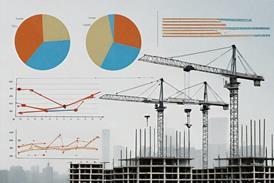Open all hours? Not exactly, but while most theatres remain determinedly closed out of performance hours, Covent Garden’s re-built and comprehensively refurbished Royal Opera House remains determinedly open. From 10am to 3pm Monday to Saturday bars and restaurants are open to the public. This, together with conducted tours, exhibitions and archive displays and free lunchtime recitals in the Linbury Studio Theatre, generates a highly mobile and ever-changing population, currently running at 1800 a day and expected to peak at 2500 a day in the tourist season.
For evening performances the main auditorium has a capacity of 2267, the Linbury Studio Theatre can hold 420 and the Ballet Area 200. Adding back stage, catering and administrative staff means that during performances there can be up to 3500 people in the building at one time.
More than just access control
The person charged with overseeing security at the Opera House is Peter Cant, Royal Opera House admin, fire and safety manager.
Clearly a traditional security regime more devoted to warning than welcoming, to deterring rather than encouraging, to the negative rather than the positive, would have been wholly inappropriate to this relaxed environment. So Cant says the ROH had to adopt an open access policy. This involves deploying both technology and manpower to ensure that visitors are welcomed, controlled and kept safe.
Looking first at the technology requirements, Cant explains that the ROH needed more than just a basic access control system. “We needed precisely monitored progress control, varying the levels of accessibility for different areas of a complex building, at different times during the day and performances.”
The access control system specified for the ROH needed to take into account the fact that, as an entertainment venue, it had to have “a proven audience evacuation system”.
The somewhat conflicting requirements of security and accessibility are what faced the installation company, Goldfield Electronics, based in Fleet, Hampshire in winning the contract to design, install and maintain the integrated safety and security system. The contract specified that it include access control, provision for rapid audience evacuation and CCTV surveillance, all monitored and controlled 24 hours a day.
Of particular concern was the need to allow unrestricted access to certain parts of the building at certain times, while controlling access to other areas, notably the auditorium and back stage. Back stage, for instance, was judged to be the target not only of criminal intruders but also devoted, and determined, fans and autograph hunters.
Central locking
The solution in an innovative system, thought to be unique to the Royal Opera House, allowing electronically controlled sequence opening and closing of doors from entry at street level through to foyers and corridors to the auditorium itself, all linked to a control room which also houses the monitors for the CCTV system. In all, 120 doors are operated from 60 dual switching points in what has been described as the ultimate in central locking.
All doors have a double loop fail-safe mechanism, push-button closure, automatic release triggered by grasping internal handles and an electronic hold-open facility for intervals and performance completion. Card readers are fitted to all doors to allow access by authorised persons at appropriate times.
Integrated into this is a system called PEDRO, the Public Escape Door Release Operation. This is Goldfield’s response to a specification calling for secure locking combined with the ability to instantly release the doors from a central control point. This is said to be a Royal Opera House first, arousing much interest among operators of mass audience venues, as well as local authorities. D p36 C Goldfield Electronics managing director John Goldsworthy says the company concentrates on large-scale, technically advanced security systems. “This was an ideal opportunity to deploy our design, development and installation capability along with our project management procedures,” he says. “We enjoyed being involved from a very early stage and working closely with the Opera House project team to achieve a fully integrated solution.”
And he adds: “Creating a system including PEDRO and what might be called controlled access rather than simply access control was a particular challenge.”
Beyond traditional manned guarding
Sophisticated as the technology may be, it requires skilled operators to make it work. Security staff also had to be able to deal with the public, in a venue that will attract a diverse range of people, from opera lovers to lunch-time diners and from hardened Londoners to tourists.
The quality of security staff employed was important, says Cant. After an exhaustive selection process, the guarding contract went to London-based First Security (Guards) Ltd.
Cant says, “It was clear from the start that we needed to go far beyond the ‘traditional’ view of ‘manned guarding’. While First Security have a role in securing the stage door and reception areas, they are also there very much to deal with the general public and answer enquiries.” Training in all these areas, as well as disability awareness, was of the utmost importance.
But the security staff also had to be conversant with the security technology being deployed. “They also, in co-operation with Goldfield, man the 24-hour control room,” says Cant. “Monitoring all relevant equipment including CCTV, fire alarms, building management systems and, of course, PEDRO.”
First Security managing director Jonathan Levine says that the Opera House contract demands high calibre staff, necessitating high rates of pay. “It is an excellent example of where the guarding industry needs to be heading, driving up standards and paying security personnel rates appropriate to the professional role they undertake. By dictating salary levels and maximum hours the Opera House ensured competition on management effectiveness rather than just price.”
Swift, sharp learning curve
It was necessary to put security systems and procedures in place within the context of developing a building, dating from 1858, into both a state-of-the-art opera and ballet venue and an open-access cultural centre, as well as tourist and leisure destination.
It was a massive, high-profile project, valued at £214 million. Two decades in the planning and two-and-a-half years in the final construction phase, it employed 80 separate contractors using 4700 tonnes of steel, 583,000 cubic feet of concrete, 40 miles of piping and enough hardwood flooring to cover a football pitch.
“The demands placed upon contractors created a swift and sharp learning curve,” says Opera House assistant project director Jeff Phillips. “They all responded magnificently, and they and the project team can be proud of their achievement.”
The eagerly awaited and much-publicised opening of the Opera House in December last year generated massive interest. Capacity audiences and large numbers of visitors to the bars, restaurants and day events thoroughly tested the security systems. And as they say, it was all right on the night.
Peter Cant, admin, fire and safety manager
Hired five years ago, Cant was supposed to fill the post for only two years until the Opera House was closed for refurbishment. In the event, he was kept on to oversee the redesign of the security and fire safety systems. Cant is something of a rarity in the security industry: a professional manager who has made a career in security rather than coming to it from the police or military. He says there is a significant difference between former policemen and himself - while they are used to barking orders, he says, he has cultivated a more cooperative approach that goes down well with both staff and the public. It's important for a security manager to understand security systems, he adds. Although one doesn't have to be an expert on the technical side, one does have to know what the systems are capable of, to be able to specify exactly what is required. Leaving it up to a consultant alone to decide what to install, he says, might leave you wishing you had a slightly different system, to say the least. The system that is installed currently at the Opera House was jointly specified by Cant and a consultant. Three years old, the system is due for an upgrade in two to three years, and Cant is already working on the budgets for 2002-2003, with a view to improving the system further yet.Source
SMT




















